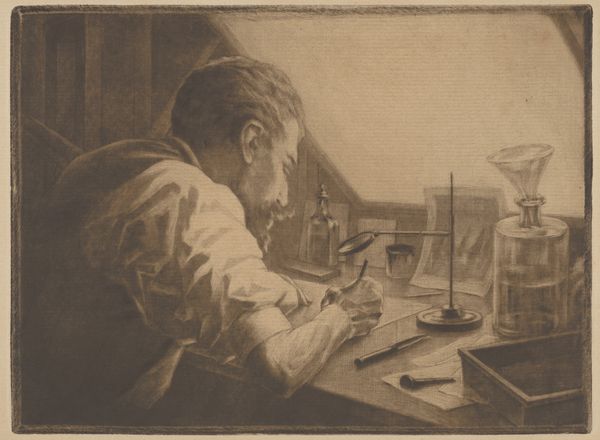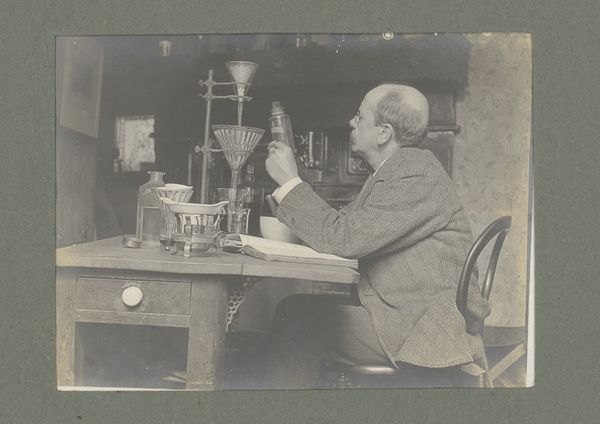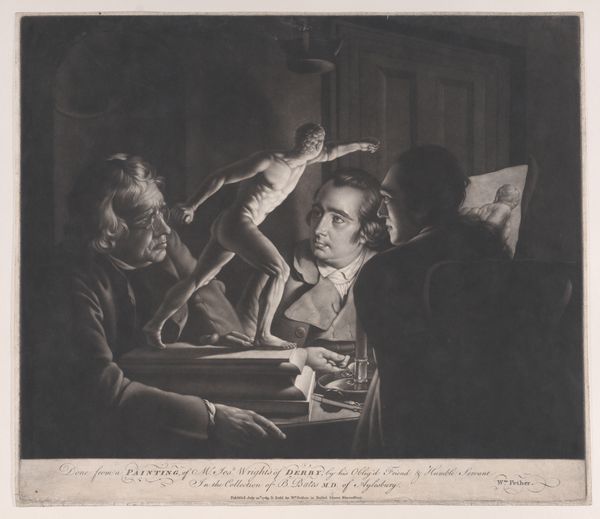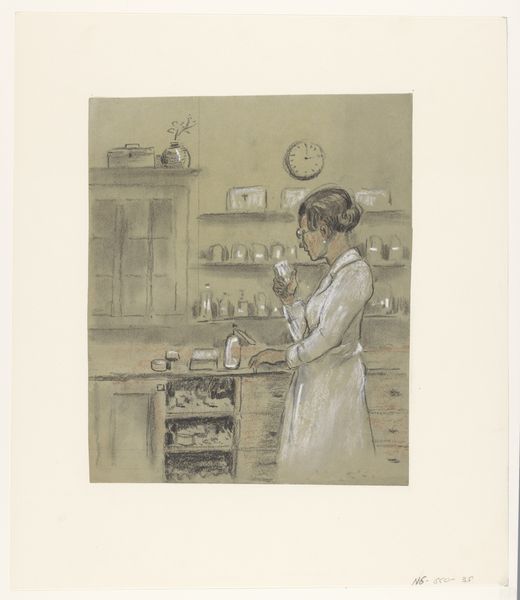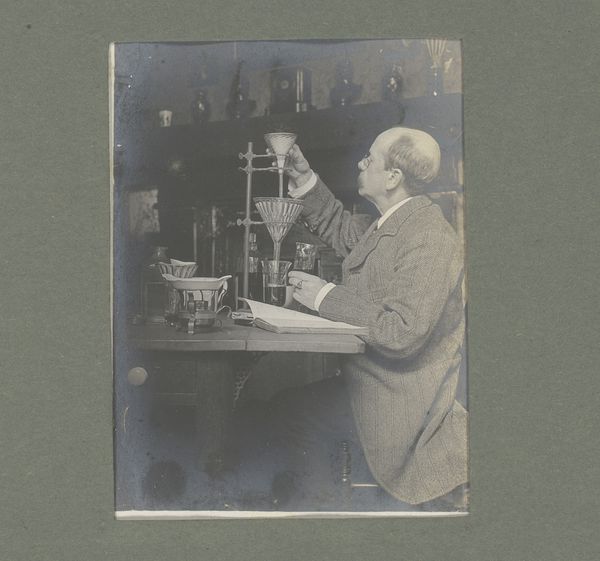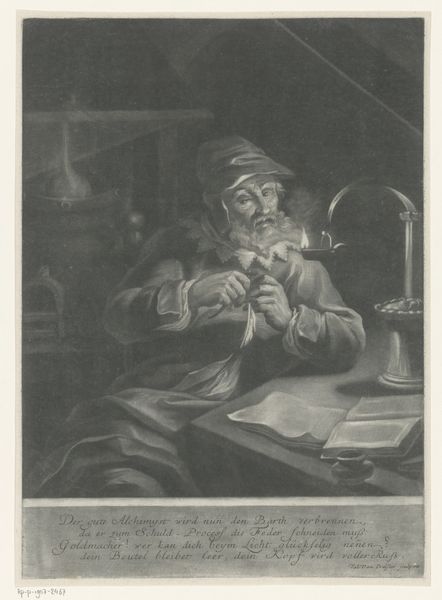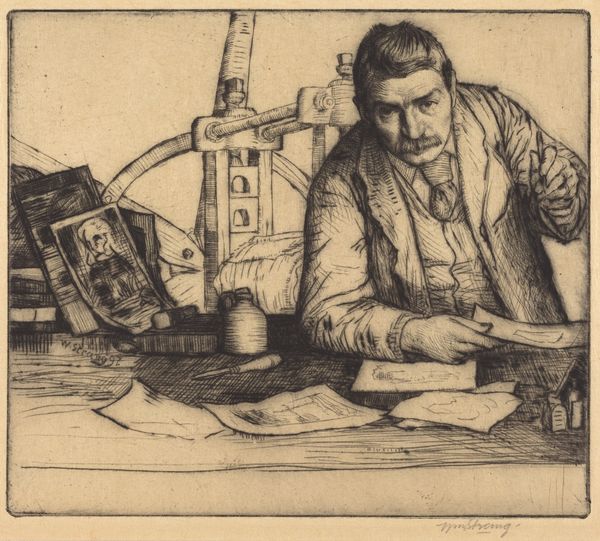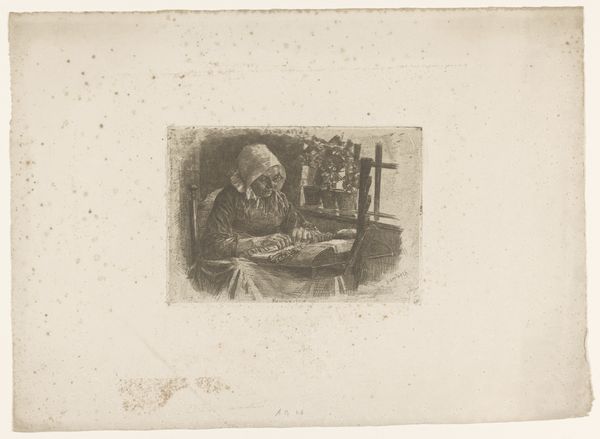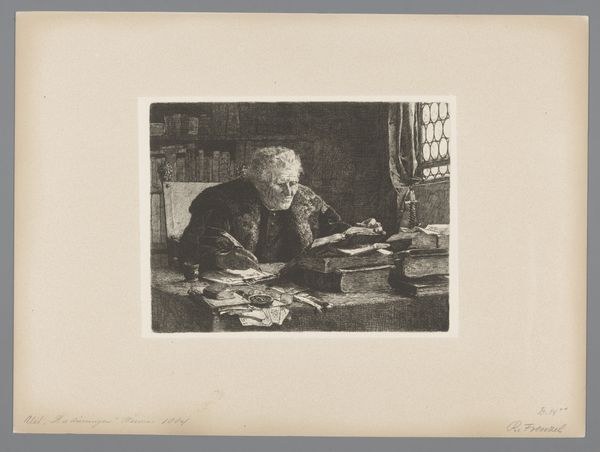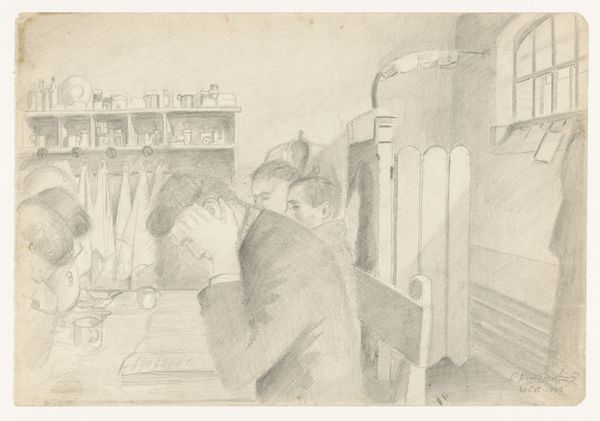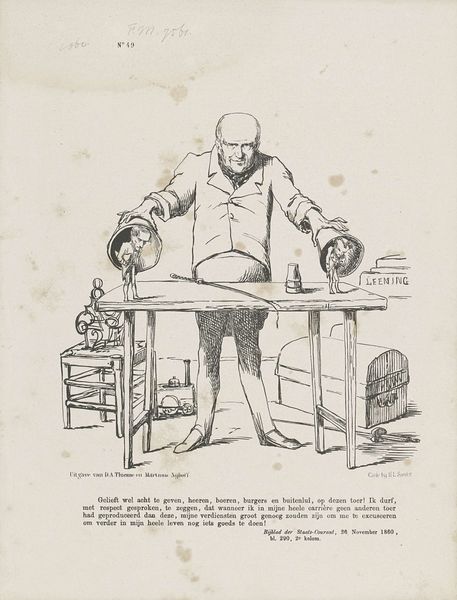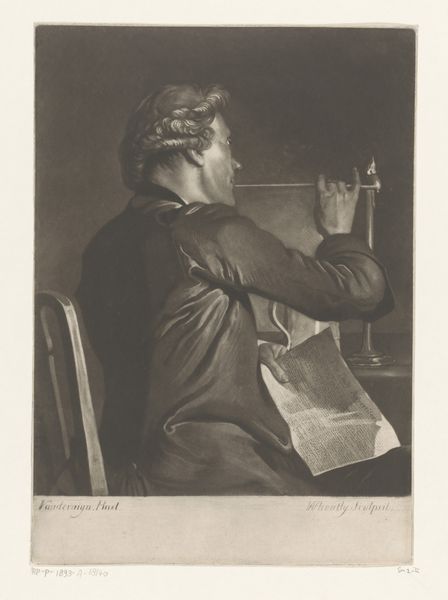
drawing, pencil, graphite, charcoal
#
portrait
#
drawing
#
pencil sketch
#
caricature
#
charcoal drawing
#
pencil drawing
#
pencil
#
graphite
#
portrait drawing
#
charcoal
Dimensions: height 181 mm, width 246 mm
Copyright: Rijks Museum: Open Domain
Editor: Here we have Norbert Goeneutte's "Portrait of Henri Charles Guérard," created sometime between 1864 and 1894. It's a graphite and charcoal drawing that depicts a man intently focused at his desk. There's a really contemplative atmosphere about this work, perhaps reflecting the subject’s intellectual pursuits. What kind of cultural insights do you glean from this piece? Curator: This portrait gives us a peek into the artistic circles of late 19th-century France, doesn't it? Guérard was himself an etcher and a printer, and this drawing acts as a kind of insider portrayal. Notice the careful rendering of the studio setting – the tools, the light, even the artist's focused expression. These details point towards an interest in the artist as a subject, which became prevalent with the rise of Impressionism and Realism. The medium itself, a drawing, tells us something about artistic practice, suggesting intimacy, directness, and immediacy of capturing an artist at work. It serves less a commissioned role and perhaps reflects artistic camaraderie. Does it remind you of any contemporary artistic representations of that time? Editor: I see what you mean about artistic camaraderie! The composition feels informal, almost as if Goeneutte captured a candid moment between fellow artists. I'm curious about the tools laid out on the table: is there a symbolic weight or cultural context in understanding what Guérard created at his studio? Curator: Precisely! They tell a silent story about the artist's role and its growing social perception. By depicting those objects, the artist elevates the craftsmanship and intellectual labor associated with artistic production. Such objects signal knowledge and skill within the domain of art and contribute to constructing a specific identity around artists during this time. Perhaps Goeneutte is contributing to how society values labor of artistry. How would you place this portrait within the context of, say, the burgeoning art market of that era? Editor: That's a fascinating way to view it! It makes me think about how portraits themselves were commodities, even when they depicted fellow artists. Seeing the work within the cultural climate of increasing art market makes the art feel self-conscious and deliberate. Curator: Absolutely. So, next time you see a seemingly simple portrait, remember to look beyond the individual and consider the broader artistic, social, and economic forces at play. Editor: This has truly shifted my perspective. Thank you!
Comments
No comments
Be the first to comment and join the conversation on the ultimate creative platform.
